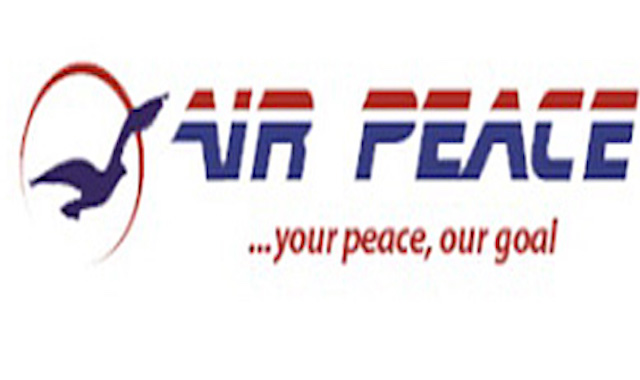General News
e-Payment Increases Efficiency of Port Operations

The result of e-payment system introduced by the Nigerian Ports Authority recently is now manifesting positively according to report releases by the Nigeria Port Authority (NPA).
An International Trade Monitor report shows that cargo throughout from 1,327 vessels during the first quarter of the year stood at 19,659,946 million metric tonnes, an increase of 14 per cent over 17,245,923 metric tones of the entire 2013.
The breakdown of cargo throughout at the ports within the period showed that general cargo, containerised cargo inclusive, contributed 32.2 per cent to cargo throughout at 6,324,366 metric tonnes, indicating a slight increases of 1.4 percent over 6,234,814 metric tonnes recorded in the corresponding period of 2013.
Also, Dry Bulk Cargo stood at 2,302,609 metric tonnes as against 1,971,015 metric tonnes achieved in 2013, contributing 11.7 per cent to cargo throughout.
Liquefied Natural Gas (LNG) shipment accounted for 27.4 per cent of cargo throughput at 5,389,137 metric tonnes compared with 3,748,437 metric tonnes in 1st Quarter of 2013, showing an increase of 43.8 per cent.
Refined Petroleum products stood at 4,613,567 metric tonnes. It also contributed 23.5 per cent to cargo throughout.
Container traffic, including empty containers, amounted to 426,976 TEUs, showing a growth of 15.1 per cent over the 2013 figure of 371,085TEUs.
A total of 78,754 units of vehicles were handled during the period under review. It indicated an increase of 32.1 per cent over the same period of 2013 figure of 59,608 units.
During the period under review, , a total of 1,327 oceans going vessels with a total Gross Registered Tonnage (GRT) of 33,940,386 called at Nigerian Ports, compared with 1,172 vessels with the GRT of 28,830,386 in 2013.
Within the same period, the Lagos Port Complex (LPC) recorded a Gross Registered Tonnage of 8, 472,229, showing an increase of 5 per cent over 8,307,011 gross tons achieved in 2013. A total of 364 vessels were handled in the period under review as against 357 vessels in 2013.
Tin can Island Port recorded a Gross registered tonnage of 11,220,946, indicating an increase of 28.3 per cent over 8,742,953 gross tons recorded in the corresponding period of 2013. A of 435 ocean going vessels were handled within the period.
Calabar Port complex recorded a total GRT of 800,578, a rise of 33 per cent over 614,150 gross tons of 2013, leaving the port with 65 Ocean going vessels in the period under review.
Rivers Port complex recorded a total Gross registered tonnage of 1,262,899, while Onne Port complex recorded a GRT of 10,092,281 reflecting an increase of 18.3 per cent over 8,529,225 gross tons recorded in the corresponding period of 2013 with 181 vessels handled within the period.
The Delta Port Complex recorded 2,091,453 gross tons, showing an increase of 163 per cent over the 2013 figure of 794,877 gross tons, with 151 vessels handled.
The positive variance in port operations during first quarter of this year over that of last year could be the result of the implementation of E-payment in January 2014 which has reduced turnaround time of vessels from 5.3 days to 4.6 days within the period under review.
Also significant increase in LNG shipment re-sulting from the European economic recovery efforts after the debt crises contributed remarkably to the increase in cargo traffic.
MaritimeFirst Newspaper also quoted Mallam Habib Abdullahi, managing director of Nigerian Ports Authority (NPA), while receiving Mr. Diru Verheyen, Belgium Ambassador to Nigeria, recently, said that the successful Port reforms programme embarked upon by the Federal government some years ago has resulted in the improved operational activities.
Besides, it opened many investment opportunities for investors and urged prospective investors to explore areas in the Port industry to invest in.
Abdullahi said that the Authority will continue to focus on research based policies and measures that will ensure uninterrupted 24 hour port operations, fast tracking automation of port operations, continuous dredging and removal of critical wrecks along the channels to guarantee conducive business environment needed to actualize its vision to be the leading port in Africa.
General News
NCAA Orders Airlines to Enforce $10,000 Currency Declaration Rule

The Nigeria Civil Aviation Authority has ordered all international airlines flying into Nigeria to enforce the $10,000 currency declaration rule.

The authority said the rule is required for passengers to declare cash or negotiable instruments above the limit, as part of efforts to strengthen anti-money laundering compliance.
According to the NCAA, the directive, referenced as NCAA/CPD/ABV/298, dated 24 April 2025 seeks to address gaps in the enforcement of existing currency declaration obligations for inbound passengers.
This was announced in a statement issued by the Director of Public Affairs and Consumer Protection, Michael Achimugu, via his official X account on Tuesday.
“International carriers must take two key actions, which include “Make inflight or pre-landing announcements informing passengers of their legal obligation to declare any currency or Bearer Negotiable Instruments exceeding $10,000 USD or its equivalent upon arrival in Nigeria.
“Distribute currency declaration forms onboard for passengers to complete before landing. The NCAA has received reports indicating that some airlines are yet to comply with this directive”, the statement read.
The NCAA said these requirements are consistent with international best practices and are vital to preventing the illegal movement of large sums of money across borders.
The Authority warned that full cooperation from international airlines is essential, saying, “Please note that the cooperation of all international airlines operating in Nigeria is critical to supporting the country’s efforts to align with global financial standards.”
Accordingly, the authority emphasised that full implementation of this directive, particularly as it concerns inbound passenger declarations, is of utmost importance.
“Compliance will be closely monitored, and non-compliant airlines will face appropriate sanctions,” it added.
General News
Appeal Court Nullifies Registration of ‘KPMG Professional Services’

The court of appeal in Lagos has asked the Corporate Affairs Commission (CAC) to revoke the certificate of registration of “KPMG Professional Services”.

In a unanimous decision delivered on Thursday, the appellant court granted the reliefs sought by KPMG Nigeria against CAC and KPMG Professional Services.
The judgment was read by Abdullahi Mahmud Bayero, the judge.
The two other judges are Abimbola Obaseki-Adejumo and A.M. Talba.
In 2002, KPMG Professional Services was registered as a company with CAC despite the existence of KPMG Nigeria, comprising its audit, tax, and consulting arms.
The KPMG Nigeria has long been registered in Nigeria before 2002.
KPMG Audit was registered in 1969, KPMG Tax Consultants in 1990, and KPMG Consulting in 1969.
Displeased with the registration of KPMG Professional Services, KPMG Nigeria approached the federal high court.
The consulting firm had argued that the name “KPMG Professional Services” was deceptively similar to its long-established identity.
In 2005, the lower court dismissed KPMG Nigeria’s case, citing an alleged merger between KPMG Nigeria and Akintola Williams Deloitte as reason the company could no longer assert rights to the name.
The lower upheld the second respondent’s (KPMG Professional Services) counterclaim and ordered that KPMG Nigeria’s name be struck off the CAC register.
The lower court had premised its decision on newspaper articles stating that KPMG Nigeria reportedly merged with Akintola Williams Deloitte.
Delivering the judgment, Bayero ruled that the lower court erred by relying on newspaper articles to ascertain that KPMG Nigeria allegedly merged with another company.
The judge said the documents showing the alleged merger were not presented before the lower court, and the form of the alleged merger could not have been known.
“In any event, the only branch of KPMG, if any, that entered into a merger with Akintola Williams as stated in the newspaper articles 18, is KPMG Audit,” the judge ruled.
“The other spheres were totally unaffected. It would therefore be wrong to state that the merger (which has not been shown to this Court) of KPMG Audit with Akintola Williams means all the other areas of business, including KPMG Consulting and KPMG Tax Consultants, also ceased to exist.
“Even if the Appellants (KPMG Nigeria) had ceased to do business as the Court seemed to have held, the 2nd Respondents (KPMG Professional Services) should not have been carrying on business until the Appellant’s certificate of registration is withdrawn or set aside.
“They cannot use the name until the Appellant’s certification of registration is withdrawn or set aside. They cannot use the name until the name is removed from the 1st Respondent’s (CAC) Register of Names.
“The 1st Respondents can only assign the name to the 2nd Respondents after first taking it away from the Appellants.”
The court ruled that CAC erred by registering KPMG Professional Services despite the existence of a business name, which is already registered.
The judge reversed the earlier ruling of the lower court and reaffirmed the primacy of statutory protection for existing business names under Nigerian corporate law.
General News
Air Peace Launches Abuja–London Heathrow, Gatwick flights October 26

Air Peace has announced the launch of direct flights from Abuja to London Heathrow and Gatwick airports, with operations scheduled to begin on October 26, 2025.

The airline said in a statement on Sunday that round-trip fares for the Abuja–London service will start from N1m, making it the first Nigerian carrier to offer direct connections from the capital to both of London’s major international airports. This was contained in a press release issued on Sunday by the airline’s spokesperson, Efe Osifo-Whiskey.
“Direct international flight services from Abuja to both London Heathrow and London Gatwick Airports, effective October 26, 2025.
“Air Peace becomes the first Nigerian carrier to offer direct services from Abuja to both of London’s major international airports, further solidifying its role as a leader in regional and intercontinental aviation.
“Travellers originating from any of Air Peace’s domestic destinations across Nigeria can now book through fares via Abuja to either Heathrow or Gatwick using a single ticket, eliminating the need for multiple bookings or baggage re-checks,” the statement read.
Similarly, the new route opens convenient access for inbound passengers from the UK to cities across Nigeria.
“Travellers from London can access multiple destinations across Nigeria using a single Air Peace ticket through Abuja every morning. These destinations are Lagos, Port Harcourt, Enugu, Benin, Warri, Owerri, Kano, Yola, Gombe and Asaba, for now. Other destinations will be added later,” Osifo-Whiskey stated.
Air Peace is also offering what it describes as unprecedented value in pricing and service.
Osifo-Whiskey said, “It provides a distinct competitive advantage, enabling passengers to travel between Nigeria and the United Kingdom with greater ease, efficiency, and value, due to the possibility of choosing multiple cities entry and exit points.
“Has the cheapest fares ever, starting from only 1 Million Naira round trip. Huge baggage allowance.”
The Abuja–London launch comes months after the airline began Lagos–London Heathrow flights, which started earlier in 2024.

 E-Financial2 days ago
E-Financial2 days agoUBA’s LEO Becomes Africa’s First Chatbot to Enable Cross-Border Payments

 News2 days ago
News2 days agoUN Appoints Sa’id, Nigerian to Nuclear Panel

 E-Business2 days ago
E-Business2 days agoNIMC Enrolls 122m for NIN, Cuts Extortion by 40 Percent

 Telecom2 days ago
Telecom2 days agoMTN Urges Nigerian to Regards Telecom Infrastructure as National Assets

 Telecom1 day ago
Telecom1 day agoMTN Nigeria Rewards 1,500+ Winners with ₦290m in Mega Billion Promo

 General News2 days ago
General News2 days agoAppeal Court Nullifies Registration of ‘KPMG Professional Services’

 E-Financial1 day ago
E-Financial1 day agoNaira Slides Again, Hits ₦1,532.34/$ Despite CBN’s Dollar Push

 Telecom2 days ago
Telecom2 days agoBitget Launches $6M Global Crypto Trading Contest with New Competitive Segments














